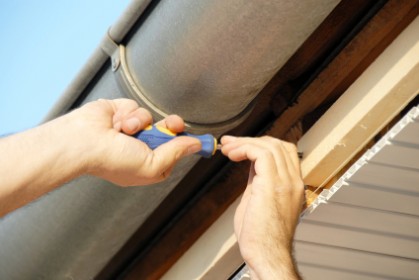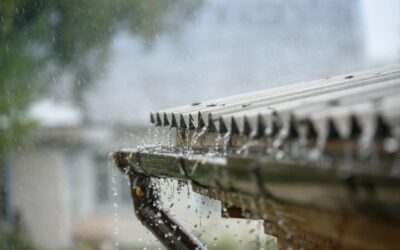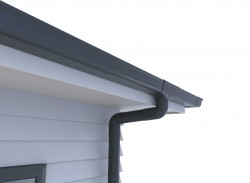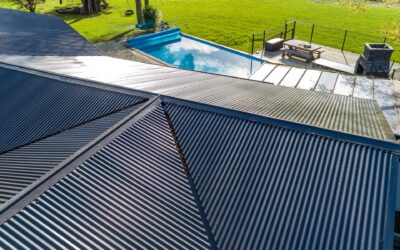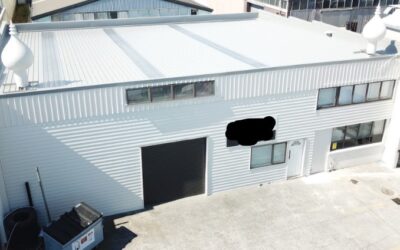As roofers, we know the importance proper roofing solutions. You may have a beautiful roof that has been weatherproofed with the latest flashing, the best roof membrane, and has been constructed perfectly, but if you don’t have a solid spouting system then this is all for nought.
Spouting is crucial to keeping your roof in tip-top shape for as long as humanly possible, but it is so often swept under the rug when it comes to installation and home maintenance! To show you just how important it is, we are dedicating this blog post to spouting.
Why is spouting so important?
While gravity is very helpful in removing Auckland’s common rain from your roof, it’s not completely effective. Rainwater tracking down the side of your house can also drag all the dirt and debris from your roof along with it, encouraging issues and discolouration in your siding.
An extra system for drainage is important to prevent puddling, the occurrence of mould, and sagging from plaguing your roof and siding. Spouting is a great solution because all the excess water drips off into the gutters surrounding the roof, and is carried to the ground through a downpipe.
What is the difference between traditional and continuous spouting?
Up until recently, traditional spouting was the preferred format for roofing companies in Auckland. It comes in pre-made lengths that are fitted together like a jigsaw puzzle, which means they could be fitted to homes of any size. While this makes the spouting very versatile, it also introduces complexity into the structure.
If different pieces have to join together, and those joins represent gaps in the spouting through which leaves and insects could find their way. This can lead to your spouting deteriorating faster than normal, costing time and money to take down and re-install once it gives up.
With continuous spouting, there are no joins except for the ones at the corners of the home. During an installation, your home is measured, and the spouting is cut to size, creating a smooth pathway for water to drain away from your roof. This drastically reduces the chance of something making its way into the pipe and creating a blockage.
The keys to keeping your spouting healthy
Like any other part of your roof, the spouting is going to take some punishment as a result of its exposure to the elements. To prevent it from meeting an untimely demise, here are three things you can incorporate into your home maintenance schedule:
- Hose down the outside of your spouting. This prevents lichen and mould from gathering in a space where rain can’t wash it off.
- Keep an eye out for blocked gutters and clean them out when needed. Blocked gutters lead to flooding, and flooding leads to damage all over your roof! If you notice that there is more debris on your roof than normal—usually following a storm or heavy wind—then it could be clogging your gutters as well.
- Clean them once a year. Grab a ladder and give the gutters a wash with gentle soap and some warm water, but be sure to do so safely, with a secure ladder. This uproots any bacteria and reduces the chance of mould or corrosion (should you opt for metal gutters).
News
Roof Auckland Achieves Tōtika Prequalification
We’re proud to share that Roof Auckland has officially achieved Tōtika Prequalification. This...
Preparing Your Roof for a Brand New Year
When the calendar ticks over and we start a new year, lots of people take the opportunity to set...
Resource
Winter Roof Care: Keep Your Auckland Home Safe and Dry
Winter in Auckland can be wet, wild and unpredictable. Your roof is your home’s immune system – it...
Why Quality Spouting is Essential to Your Property
By law in New Zealand, all buildings must have some form of spouting implemented as part of their...
Expert’s Guide to COLORSTEEL® Roofing
We are dedicated to representing the best products in the roofing industry, and one of those...
Residential Projects
Project Showcase: Residential Home – Mt Albert
Product: COLORSTEEL® MaxamProfile: 0.55 Corrugate & 0.55 StylelineColour: Thunder...
Project Showcase: Residential Home – Central Auckland
Product: COLORSTEEL® EnduraProfile: 0.55 CorrugateColour: CloudThe ChallengeThis Central Auckland...
Central Auckland – .55 Corrugate Colorcote ZinaCore
Product: Colorcote ZinaCoreProfile: .55 CorrugateColour: Grey FriarsWe recently completed a...
Commercial Projects
Project Showcase: Countdown Re-roof – Birkenhead
Product: Colorcote MagnaflowProfile: DP955, BB900Colour: TitaniaAdditional System: TPO Recovery...
Project Showcase: Commercial Asbestos Removal Project, Eden Terrace, Auckland
Product: ColorCote ZinacoreProfile: 0.55 CorrugateColour: Sandstone GreyFlashing: Colorcote...
South Auckland – .55 Styleline
Profile: .55 StylelineColour: Sandstone GreyRoof Auckland was engaged by a client to replace the...
“
Let us handle your roof maintenance and Auckland installations
Stay Up to Date With The Latest News & Updates
Join Our Newsletter

